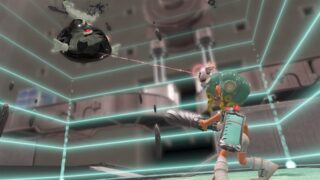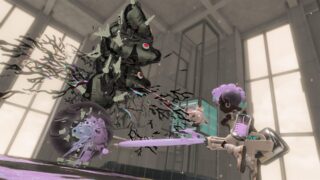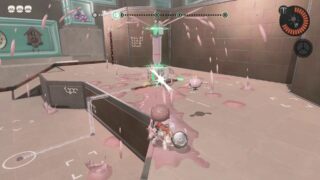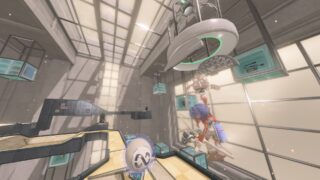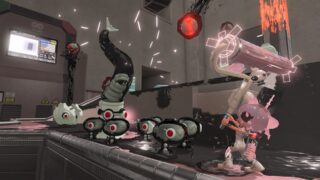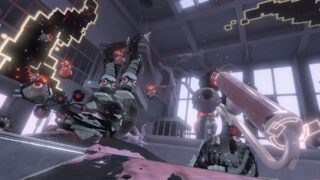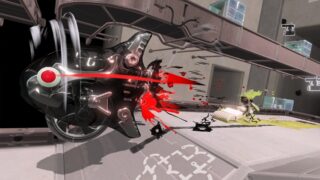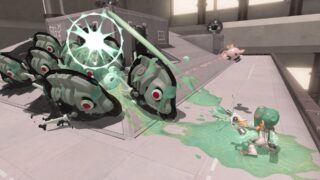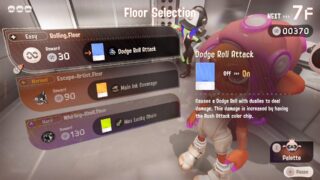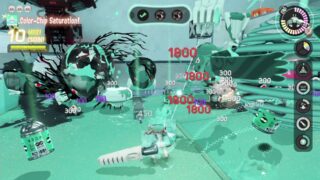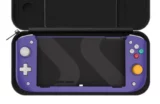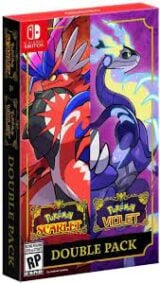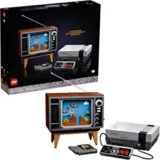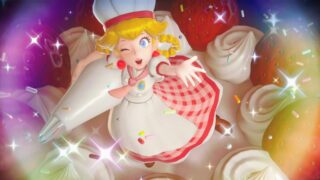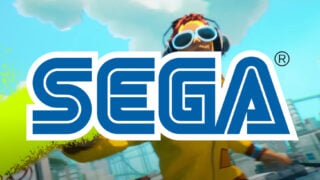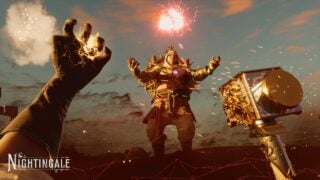Splatoon 3’s Side Order expansion brings something truly fresh to the series
Nintendo delivers a challenging add-on inspired by roguelites, while still adding to the series’ weird and wonderful lore
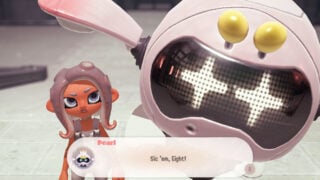
Splatoon 2’s Octo Expansion is arguably one of Nintendo’s strongest. So much so that it wouldn’t do to just repeat it again in Splatoon 3, not least when its single-player campaign already took many of that expansion’s lessons. But while the title might suggest something optional and lightweight, Side Order genuinely offers something fresh to the series.
Taking a leaf from other AAA games such as God of War Ragnarok: Valhalla, Side Order – releasing February 22 as the second wave of Splatoon 3’s expansion pass – takes inspiration from roguelites, using the genre’s randomisation and permadeath structure to shake up existing mechanics. At the same time, there’s also a narrative element that will please fans who have been keeping up with Splatoon’s strange lore.
We’re not talking anything on the level of Hades or even Valhalla, but much like how Splatoon 2’s campaign based itself on the outcome of the final Splatfest in the first game, Side Order also bases itself on the outcome of Splatoon 2’s final Splatfest, ‘Chaos vs Order’, where Chaos came out on top.
Splatoon 3: Side Order gameplay video
You play as a new customisable character called Agent 8, who wakes up in Inkoplolis, the first game’s hub reintroduced in Splatoon 3’s Expansion Pass in Wave 1. However, the usually vibrant location has been mysteriously drained of all its colour, the reasons behind that players will discover as they ascend Inkopolis’ tower, itself also transformed into the Spire of Order.
There’s a familiar roguelite structure to Side Order as you take an elevator up the tower, one floor at a time, each floor presenting a self-contained challenge, such as destroying a number of portals, eliminating a very specific and evasive enemy, or controlling zones similar to the ranked mode Splat Zones.
The challenge is that you’re also up against a new enemy called Jelletons. These not only continue spawning but have the same spongey quality as the Salmonids in co-op mode Salmon Run, with just as many variations. Basically, imagine Salmon Run, and that will give you a basic idea of how overwhelming things can get.
Fortunately, you also have a few tricks up your sleeve. The first of these is that you’re accompanied by a drone who claims to be Off The Hook member Pearl, Splatoon 2’s co-host. When you’re in the air, pressing B allows you to grab onto them to glide around, with floors containing elevated platforms, inkrails and dash tracks on walls giving you the best opportunities to take advantage of this.
The drone also has its own gauge that can be built up, where it’ll then act as a kind of support turret. It’s just one element that had me thinking of Nier: Automata, of all things, as you can imagine Nintendo’s developers may have also looked at that game when designing some of Side Order’s strange and large-scale machine-like bosses encountered on every tenth floor. Of the two I fought, one resembled a giant sphere, and the other was a kind of rotating tower made up of multiple layers.
“The challenge is that you’re also up against a new enemy called Jelletons. These not only continue spawning but have the same spongey quality as the Salmonids in co-op mode Salmon Run”
But where Side Order really changes things comes from Palettes. You’ll start each run with a blank palette, but as you ascend each floor, you’ll gain new modifiers, or chips as they’re referred to in-game, that fill in the many available slots, changing up how you play. Each chip is categorised on a certain play style, such as power, mobility, or range. They’re also colour-coded so that at a glance of your palette, you can get an idea if your upgrades are balanced or leaning towards a specific playstyle. In a clever and subtle touch, it also changes the colour of your ink.
Acquiring new chips depends on the challenge you pick for each floor, of which you usually have three choices, which are also categorised by difficulty, including easy, normal, hard, and the intriguingly named rigorous (let’s just say it takes extreme care and perfection to survive).
You can choose to play it safe, but naturally, you might have fewer rewards, while a chip that you really want might require taking on a trickier challenge. It does also feel genuinely quite randomised so it’s actually possible to encounter a rigorous choice on a very early floor while you might have a floor where there are no easy challenges to opt for.


Some challenges also include a ‘danger’ surprise that you won’t know until you choose it, which in my case turned out to be a floor in complete darkness aside from what I could see within a few steps. You’re also warned that if you choose to avoid a danger challenge on one floor, then it will appear more frequently, so you might prefer biting the bullet early and going for an easy danger challenge, as opposed to later on when you have all three challenges marked with that modifier with higher difficulties.
Palettes also refer to the weapon that you have, so in my case, my starting palette had Splat Dualies, but I was also able to unlock another palette that had the Splatbrella. As you earn in-game currency, earning more if you opt for more challenging floors, which can be spent on floors with vending machines. Among the items you can find here, they include options to swap your sub-weapon and special, a change from the main game where weapons have always been locked to specific loadouts. Similarly, you can also change the support power of your drone.
“You’ll start each run with a blank palette but as you ascend each floor, you’ll gain new modifiers, or chips as they’re referred to in-game, that fill in the many available slots, changing up how you play.”
Even though you can choose the difficulty of each floor, you can also make each run easier overall. When you die, your palette chips and currency on that run get converted into Prlz, which can be spent on permanent upgrades outside of the tower (it’s then worth noting that you might opt to not use any vending machines on that run so that it converts more Prlz instead). These include increasing your max lives and improving damage reduction, max armour, or armour recovery speed.
But the real game-changing moments come from the possibilities that come up in each run, depending on the chips that you opt for. In the couple hours hands-on I had, I was only able to scratch the surface of these modifiers, such as the basics of increasing ink damage, as well as being able to provide some knockback against enemies, which comes in handy when you’re facing a relentless horde.
There are also chips that add completely new elements, such as how squid surge and squid roll; previously, traversal-specific skills can be modified to damage enemies. I was, however, slightly irked that I needed an upgrade just to be able to use the Splat Dualies’ roll mechanic, which is usually there by default.
However, we were also given a much higher-level demonstration from Nintendo staff following the hands-on. One specific example comes from the Splat Charger, a weapon that’s typically for long range and requires time to charge up.
However, with the right modifiers, it can deal just as much damage at close range while the charge time can be reduced to the point that you barely notice it, drastically altering how you use that weapon. Of course, its shots still use up a lot of ink, but then you could also pair that up with upgrades that improve your luck so that, for instance, defeated enemies are more likely to drop items that immediately refill your ink.
After a couple of hours attempting to ascend the Spire of Order, including some pretty epic failures with the harder challenges, I can’t wait to dig further in to see how far Side Order goes into letting players break Splatoon’s established mechanics. Having also found myself increasingly out of depth in multiplayer, it’s also a great way to revisit a game that, since its first instalment, has always had the goal of staying fresh.
